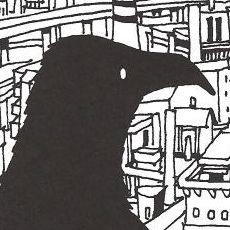Tag: mecha
-
Discovering Eureka Seven; subtext and pop culture
/
/ ReviewsRead More →: Discovering Eureka Seven; subtext and pop cultureUnawares and unwilling, often the best anime passes me by. Deep down I think I always knew I would love Eureka Seven, but for whatever reason, like I said, it just passed me by. That is, until now. Maybe because it’s spring time; the grass is green and the leaves are greener, and I’m just…
-
Tengen Toppa Gurren Lagann – "Listen to me, you fucking furry"
/
Read More →: Tengen Toppa Gurren Lagann – "Listen to me, you fucking furry"This episode confirms it; Gurren Lagan is made of all kinds of awesome. The first 10 minutes… I’ve been sitting here for 20 and I still can’t articulate everything that’s so good about it. I’m talking about the knife fight. The way the characters move, the way they talk, the art, the fluidity of animation,…
-
Big and dumb mecha show, Tengen Toppa Gurren Lagann
/
/ ReviewsRead More →: Big and dumb mecha show, Tengen Toppa Gurren LagannIn a word, the 2007 spring season has been AWESOME. So much so, I’m already fearing the potential back-log of episodes. Of the 7+ new shows I’m following, my favourite right now is Tengen Toppa Gurren Lagann. It’s hard to know what to expect from Gainax these days, but I had great fun watching this.…
-
Gunbuster – I Love You But I've Chosen Darkness
/
/ ReviewsRead More →: Gunbuster – I Love You But I've Chosen DarknessPutting aside the hyperbole and the fandom that seems to hold hands and religiously scream about every post-digisub series (myself included), the majority of newly crafted anime is objectively mediocre and creatively flat. Realizing this, yet still hopelessly attracted to spending an inexplicable amount of time rooted in front of the stuff, it’s about time…
-
Past, present and future
/
Read More →: Past, present and futureTo quote rubbish rockers Staind, it’s been a while. Of course I haven’t stopped watching anime, I just don’t have much to say. I could write boring episode reviews, but you know, that’s boring! More than anything I seem to rely on inspiration to write and the feeling now is that I’m either burnt out…
-
Again the fate of the world is in the hands of 14 kids (Bokurano)
/
/ ReviewsRead More →: Again the fate of the world is in the hands of 14 kids (Bokurano)Its been a while readers, 7 days to be precise, and as we all know, 7 days on internet may as well be a lifetime. I won’t labor you with the details, but suffice to say that this gradual slow down in blogging is sadly down to cliche reasons; I have found a new job…
-
Giant Robo – Man-size anime
/
/ ReviewsRead More →: Giant Robo – Man-size animeAbly piloting his nuclear powered giant robot (sensibly dubbed "Giant Robo"), Daisaku Kusama is a brave young kid charged with the every day fate of saving the world. We join his story with his team mates in the internationally renowned "Experts of Justice" jumping (and teleporting!) from country to country fighting off the monstrous terrorists…
-
Neon Genesis Evangelion – Why is it classic anime?
/
Read More →: Neon Genesis Evangelion – Why is it classic anime?Neon Genesis Evangelion is considered by many critics to be a “classic” anime series. Loved and loathed in equal measure, its polarising reputation for invoking a distinct reaction from its viewers endures (inside and outside fandom) even today- an impressive feat being as it is a decade on from its Japanese TV debut. But what…
